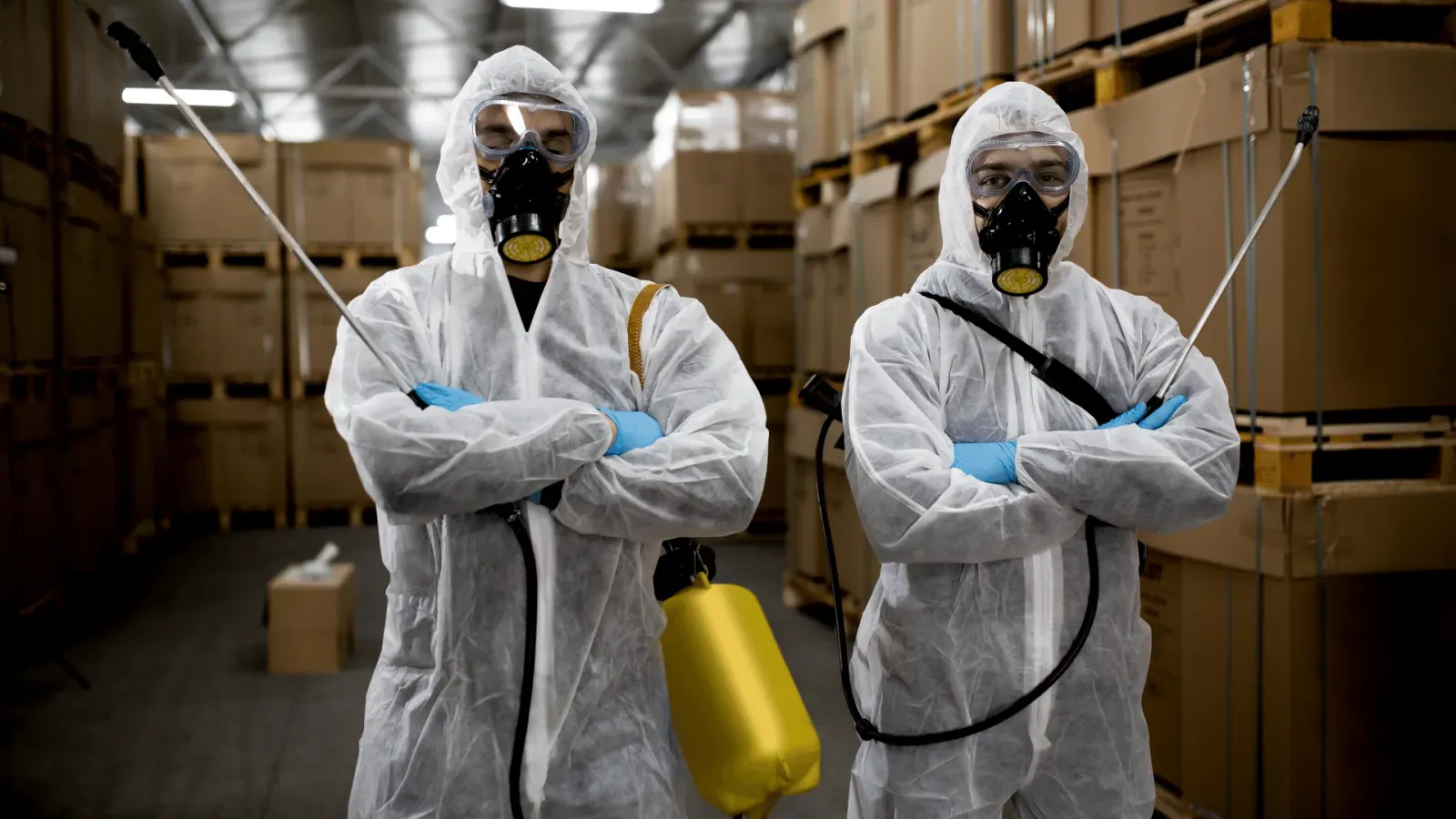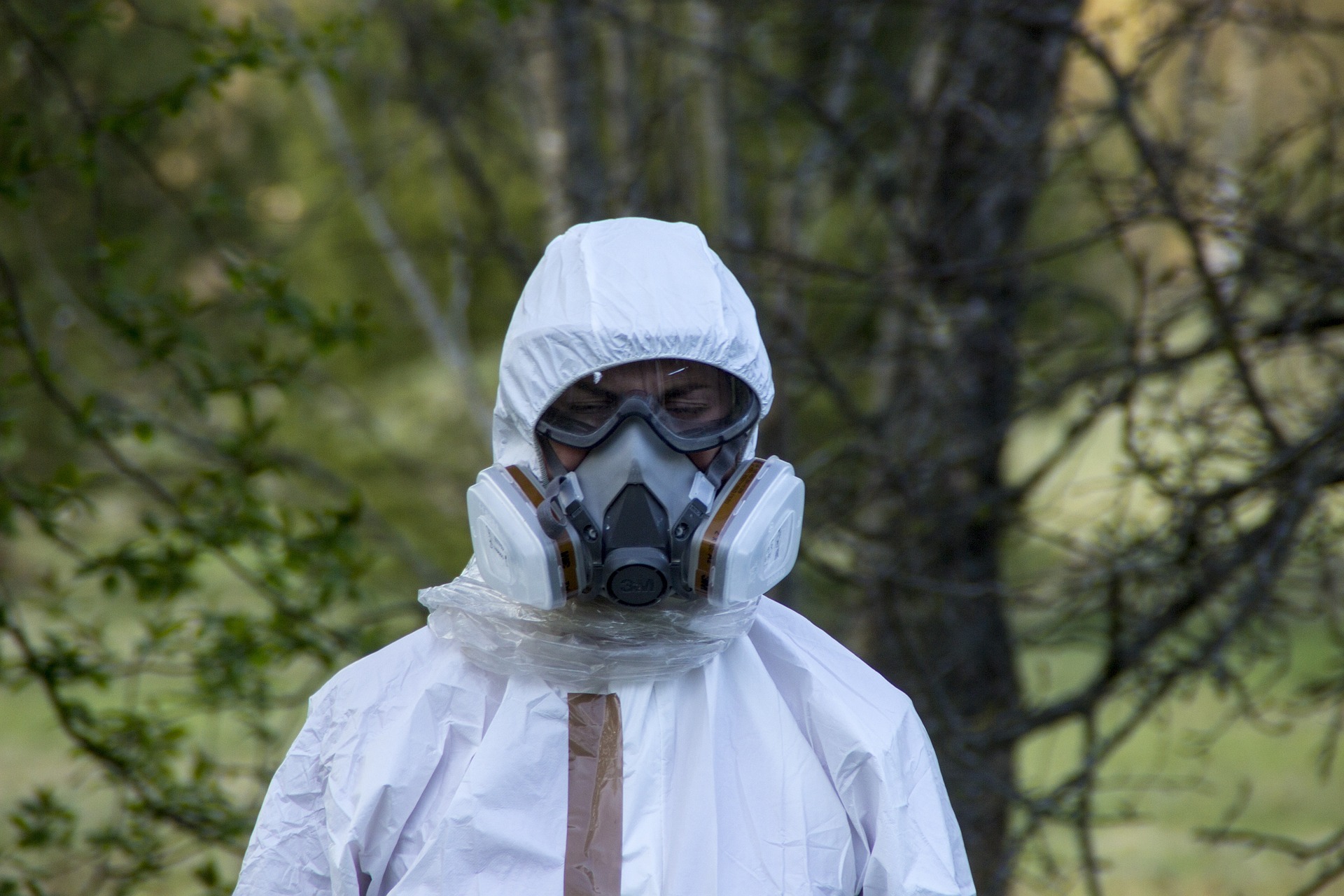The Building Envelope & Funky Smells


Funky building smells and “off” feelings inside a building can often be traced back to moisture and its effect on IAQ. But even if your building hasn’t had a “water event”, moisture can still eat away at your building. How? It goes back to the building envelope and the surrounding climate.
Remember a while ago when we were talking about Sick Building Syndrome (SBS) and Building-Related Illnesses (BRI)? (If not, here’s the article.) We discussed how modern, tightly sealed buildings can produce systematic indoor air quality (IAQ) problems. Proper ventilation and HVAC controls can help correct these problems. But unfortunately, moisture is still the root cause of many IAQ problems that cannot be solved without first going to the source.
.
How Does Moisture Affect IAQ?
Most people don’t think of moisture as an IAQ problem. In fact, the presence of moisture around building materials is the single most important factor for mold and bacterial growth.
Excess moisture in the air can worsen asthma and allergy symptoms, lead to uncomfortable indoor humidity, and seriously impact occupant comfort, health and safety in other ways. Some common IAQ problems caused by unwanted moisture include:
- Sick Building Syndrome
- Building-Related Illness
- Increased allergies & asthma
- Mold growth
- Uncomfortable relative humidity
- Decreased productivity
- Pest problems
- Infection control problems
.
Also, let’s not forget that moisture can do serious damage to building materials. High humidity levels can cause condensation in building cavities that lead to the breakdown of building materials, damaging mold growth and ineffective building insulation, which only amplifies existing moisture and IAQ problems.
.
The Science Behind Moisture Movement
Outdoor humidity can move through building cavities via air movement or vapor diffusion. It is important for us to understand these concepts to design effective building envelopes.
Air Movement
Air movement of water vapor occurs when water molecules essentially catch a ride with air molecules as they travel from place to place. It accounts for approximately 98% of all water vapor movement.
Unwanted air movement often occurs around windows and doors of buildings, or through cracks and crevices in building materials. When air enters (infiltrates) or exits (exfiltrates) the building, water vapor can become trapped or condense within the building assembly.
Air infiltration is of special concern in hot and humid climates because it can lead to increased indoor humidity and condensation on cold, air-conditioned surfaces. In these areas, air-transported moisture is thought to be the leading cause of moisture-related problems in buildings.
Vapor Diffusion
When there is unequal water vapor pressure on either side of a wall, water molecules may try to achieve equal pressure by attempting to travel through the wall. This process is known as vapor diffusion.
The water vapor pressure difference and the permeability of building materials will determine how much water vapor diffuses through the wall. We can control diffusion by choosing building materials with the correct permeability rating and installing them in the correct part of the building assembly.
Condensation
The ultimate goal here is to prevent condensation from occurring. Condensation occurs when the water vapor in the air meets cool surfaces at or below the dew point temperature. Excess moisture in the air makes it much easier for condensation to form. We can prevent condensation by:
- Making sure that water vapor doesn’t get trapped inside building assemblies, and
- That it doesn’t contact surfaces below the dew point.
It’s quite the delicate balancing act. But proper building envelope design can help us achieve that balance.
Temperature and Humidity
Starting with the basics of how temperature can impact moisture levels, changes in temperature have a major impact on the levels of humidity in a space. When temperature increases, more water molecules can be held in the air which increases humidity. In contrast, when the temperature decreases, humidity decreases because fewer water molecules can be held in the air. Instead of hanging in the air in the form of water vapor, cooler temperatures will cause moisture to condense on surfaces.
Ensuring that temperature and humidity are at a comfortable level for people inside the space is very important because the balance can affect health outcomes. Everything from the transfer of influenza virus to cardiac problems can be affected by less-than-ideal temperature and humidity levels.
Barometric Pressure
Barometric pressure has to do with the amount of air pressure that is currently in the atmosphere. Generally, humid outdoor air pushes its way into cooler, air-conditioned buildings, which have lower barometric pressures. This happens because the air molecules are pushed into lower-pressure spaces as they attempt to equalize pressure. Think of how the air in a balloon (high-pressure air enclosed in a small space) rushes out when the balloon is popped.
Barometric pressure cycling represents the attempt by air to equalize pressure by moving to lower-pressure areas, When the barometric pressure rises, warmer, more humid indoor air will try to enter the building through the building envelope.
Temperature, Humidity and Pressure
Temperature and humidity can affect the pressure inside and outside a building in many ways. For example, hot and humid weather causes the pressure outside to increase, while air conditioning lowers temperature and regulates humidity, resulting in lower pressure. Higher pressure outside and lower pressure inside can cause water vapor to attempt to travel to lower pressure areas inside the building.
.
The Building Envelope: The Make-or-Break Barrier
Many moisture problems result from water movement through the building envelope. The building envelope should be the first line of defense against indoor air quality and moisture problems. Defined as “the physical separator between the conditioned and unconditioned environment of a building,” the building envelope is made up of the building’s bottom floor slab, roof, exterior walls, windows, and door systems. It should provide protection and separation from outdoor air, water, heat, noise and pollutants.
If the building envelope is not properly designed and installed, the ventilation system will be fighting an uphill battle trying to control pollutants and moisture-related IAQ problems.
Air Barriers versus Vapor Barriers
Air barriers limit the flow of air through materials, while vapor barriers deter water vapor from entering the building. An air barrier forms a continuous blockage around the building to withstand any air leakage going in or out of the building. In contrast, a vapor barrier works to deter any water vapor that is trying to diffuse through a wall. A main difference between air barriers and vapor barriers is that vapor barriers can have holes, and can be unsealed or non-continuous.
Vapor Barrier Permeability
The permeability of building materials helps determine how much (if any) water vapor can travel through it. Both permeable and impermeable building materials can be used properly in a building assembly. In mixed climates, highly permeable materials can help decrease the chance of moisture entrapment. In hot or cold climates, impermeable materials help prevent water vapor from reaching building materials at or below the dew point, where condensation would occur.
.
Vapor Barrier Placement
The climate will determine not only the correct permeability rating, but also where vapor barriers should be placed within the building envelope.

In cold climates, vapor barriers should be placed toward the inside of the building envelope to prevent indoor humidity from reaching cold exterior surfaces where condensation can form within the wall assembly.
Cold Climates
In cold climates the biggest concern is that indoor humidity will try to diffuse out of the building. This means that water vapor is traveling from the inside to the outside. If indoor humidity reaches cold outside surfaces, condensation can form inside the building assembly.
In this case, placing an impermeable vapor barrier toward the interior of the wall will keep indoor humidity from traveling through the building assembly to cold exterior walls. An appropriate vapor barrier might take the form of a wall coating, vinyl wallpaper or a plastic sheet behind drywall.
Additionally, indoor humidity should be controlled in indoor climates to minimize moisture diffusion. Common sources of indoor humidity include bathrooms, laundry areas, kitchens, pools, hot tubs and steam showers.
In hot and humid climates, vapor barriers should be placed toward the outside of the building envelope. This prevents outdoor humidity from reaching interior parts of the building envelope and forming condensation on cold, air-conditioned indoor surfaces.

In hot and humid climates, vapor barriers should be placed toward the outside of the building envelope. This prevents outdoor humidity from reaching interior parts of the building envelope and forming condensation on cold, air-conditioned indoor surfaces.
Hot & Humid Climates
In hot and humid climates, outdoor humidity will try to work its way inside cool, air-conditioned buildings. Condensation will occur if humidity diffuses through the building envelope and reaches cold indoor walls and surfaces.
In this climate, a semi-impermeable vapor barrier should be installed toward the exterior of the building envelope. This will prevent humidity from traveling through building materials and condensing within the wall assembly.
Mixed Climates
The majority of the United States deals with a mix of climates over the course of the year. Seasonal changes present a unique challenge because there’s a risk for condensation during both cold winter days and hot, humid summer days.
In mixed climate situations, no vapor barrier should be installed. This may seem counterintuitive, but it is essential that the building envelope remain breathable from both the interior and exterior. While this solution cannot prevent condensation, it does promote drying and reduce the risk of moisture entrapment within the wall assembly.
.
What causes “old building smell”?
All this to say…if you have an older structure that has had moisture in the walls in the past, there is a good chance that it has rotted the porous organic-based insulation and structure, including wood lathe or plaster. Oftentimes, this rotting leads to an old building smell (or distinctive old library smell). The smell will be more potent with higher or increased levels of humidity, higher temperatures and higher outdoor barometric pressure.
.
Conclusion:
If you’re in the building/renovation stages, consult a building science expert on appropriate air/vapor barriers for your climate.
If you’re concerned with a finished or older building, a firm can conduct a building survey for specific issues (such as moisture events or mold growth). If a specific culprit cannot be identified, our industrial hygienists can discuss IAQ and odor mitigation strategies with you.
related blogs

Why Indoor Air Quality Investigations is a Necessity in These Times?

Few Important Tips to Help You Select Environmental Consulting Services!




